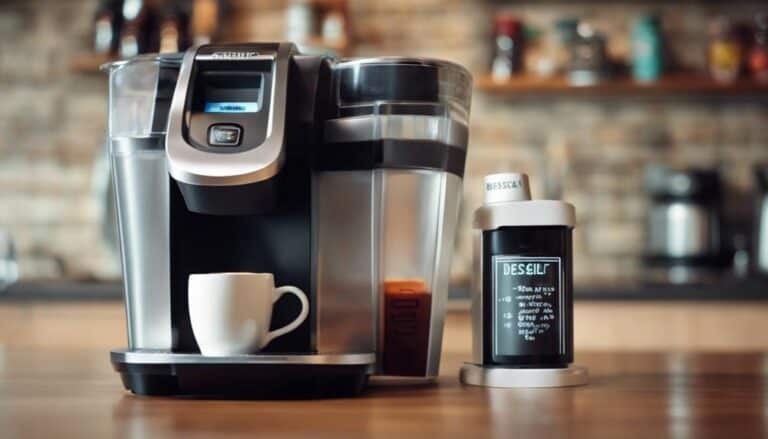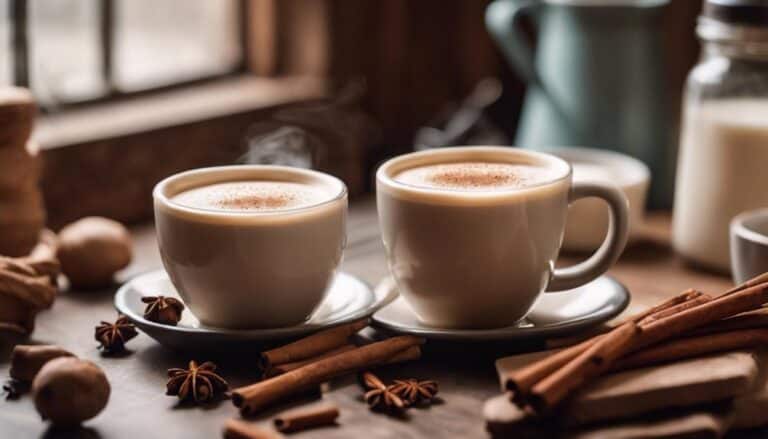Using a Kettle to Brew Tea: 7 Steps for the Perfect Cup
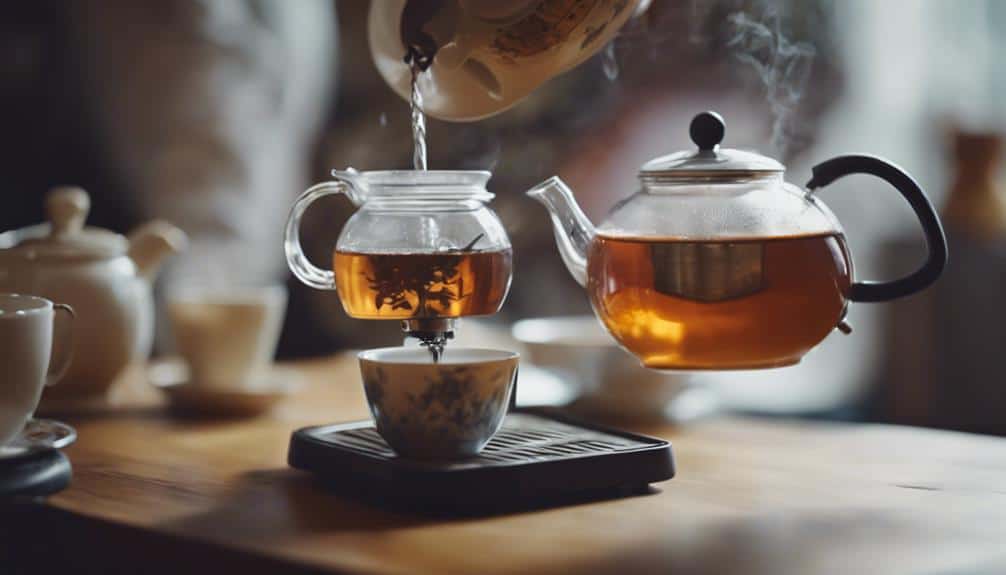
When it comes to brewing tea using a kettle, mastering the process can enhance your tea-drinking experience greatly. The subtle art of selecting the perfect tea leaves, along with the precision of water temperature and steeping time, can make all the difference in achieving that flawless cup. But there's more to this ritual than meets the eye. By following these seven steps meticulously, you can discover a world of flavors and aromas waiting to be savored in each sip. Each step plays an essential role in the journey toward the perfect cup.
Selecting the Right Tea Leaves
When selecting the ideal tea leaves for brewing, it's essential to prioritize high-quality loose whole-leaf varieties that align with your desired flavor preferences. Opting for loose leaf tea allows the leaves to unfurl and release their full flavor potential during brewing, resulting in a more aromatic and flavorful cup of tea compared to tea bags. Green tea, known for its fresh and grassy notes, is a popular choice among tea enthusiasts seeking a lighter and more delicate flavor profile.
Exploring the world of loose leaf green teas reveals a wide array of options, from the nutty nuances of Japanese sencha to the floral hints of Chinese jasmine green tea. Understanding the flavor profiles of different green teas can guide your selection process, helping you discover teas that resonate with your taste preferences. By experimenting with various loose leaf green teas, you can embark on a flavorful journey that leads to finding your perfect cup of tea.
Heating Water to Ideal Temperature
Achieving the ideal water temperature is essential for maximizing the full flavor potential of different tea types.
Monitoring the heating progress guarantees that the water reaches the perfect temperature for the specific tea being brewed.
This attention to detail sets the stage for a delightful tea-drinking experience.
Water Temperature Importance
To brew tea with perfect flavor, it's important to heat the water to the ideal temperature for each specific type of tea. Water temperature plays a pivotal role in extracting the true essence of the tea leaves.
For green tea, a temperature range of 170-185°F is recommended to avoid bitterness and enhance the delicate flavors present. On the other hand, boiling water is suitable for black, dark oolong, and herbal teas, allowing for a full-bodied taste to develop. It's essential to avoid using boiling water for green, white, and green oolong teas to prevent a burnt or bitter taste.
Adjusting the water temperature according to the tea type can greatly impact the final flavor profile of your brewed cup.
Monitoring Heating Progress
Monitoring the progress of heating water is vital to guarantee it reaches the ideal temperature required for brewing different types of tea. Using a thermometer to track the water temperature is essential for achieving the perfect brew.
Here's how to monitor the heating progress effectively:
- Regularly check the water temperature with a thermometer to make sure it doesn't exceed or fall below the recommended range.
- Adjust the heat source accordingly to control the heating progress and prevent overheating.
- Maintain a close eye on the thermometer readings to achieve precise water temperatures for different tea varieties.
Preparing the Teaware
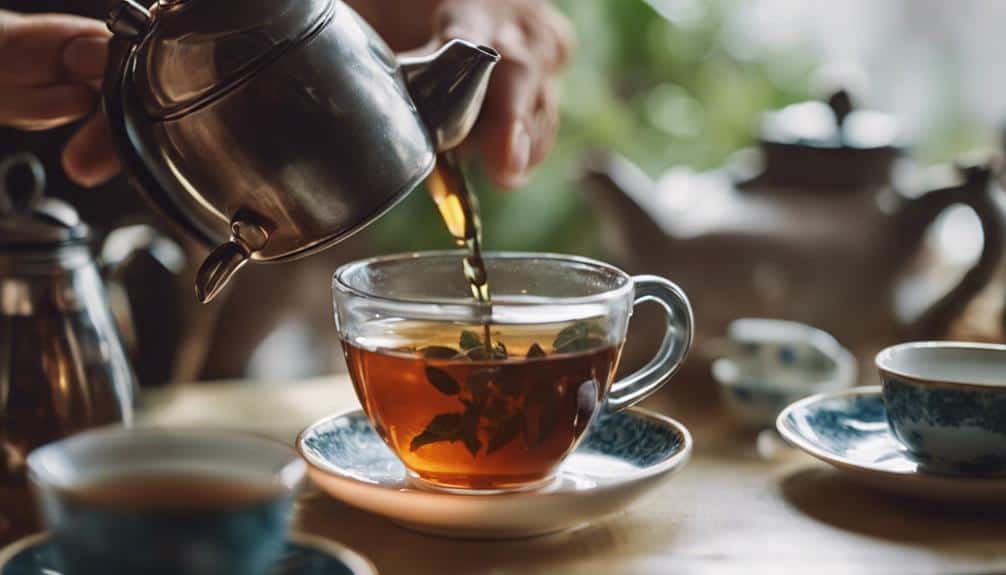
Before starting the tea brewing process, it's essential to gather all the necessary teaware essentials.
I always make sure to clean my teapot and cups thoroughly, removing any residue that could affect the flavor of the tea.
Ensuring the teaware is clean and warm sets the stage for a successful and flavorful tea brewing experience.
Gather Teaware Essentials
Selecting the appropriate vessels, such as teapots and cups, is crucial when preparing teaware for brewing tea with a kettle. To guarantee a delightful tea experience, I gather my teaware essentials meticulously:
- Kettle: The cornerstone of any tea brewing session, a quality kettle heats the water to the precise temperature required for different types of tea.
- Teapots: Choosing the right teapot ensures the tea leaves have ample space to unfurl and infuse properly, enhancing the flavor profile.
- Cups: The vessel from which you sip your tea matters; selecting the right cup can impact the aroma and taste of the brewed tea.
Clean Teaware Thoroughly
Ensuring that teaware is meticulously cleaned is vital to guarantee a pristine and unadulterated tea brewing experience. To achieve this, use mild soap or baking soda to clean teapots, teacups, and infusers thoroughly, eliminating any residue that may impact the taste of the tea.
Rinse the teaware with hot water after cleaning to prevent any lingering soap flavors from transferring to the tea. It's essential to clean teaware after each use to preserve the integrity of the tea's flavor and aroma.
Proper storage in a dry, ventilated area is also important to prevent mold or mildew buildup. By maintaining a clean teaware routine, you can ensure a delightful and unspoiled cup of tea with each brew.
Steeping the Tea Leaves
When steeping tea leaves, it's important to think about the ideal duration for extracting the desired flavor profile. Here are three essential points to keep in mind when steeping your tea:
- Tea Type: Different types of tea, such as green, black, white, or oolong, require varying steeping times to bring out their unique flavors. Green teas generally need shorter steeping times, while black teas often benefit from longer infusion periods.
- Steeping Time: The best steeping time can range from 1 to 5 minutes, depending on the type of tea and your personal taste preferences. It's vital to follow recommended guidelines to avoid a brew that's either too weak or overly bitter.
- Experimentation: Don't be afraid to try out different steeping times to find the perfect balance that suits your palate. Adjusting the steeping time allows you to customize the tea's strength and flavor according to your liking.
Straining the Brewed Tea
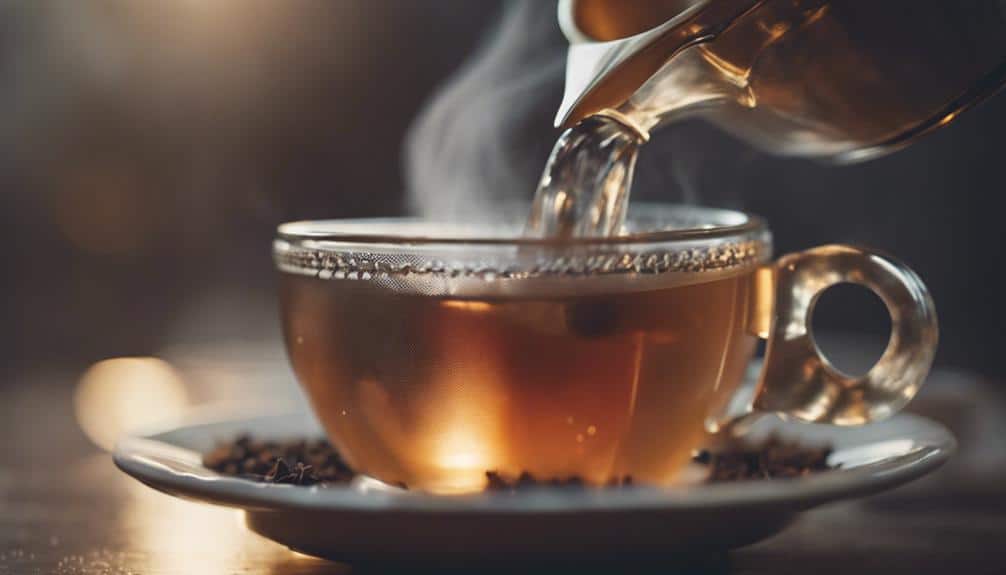
To strain the brewed tea effectively, utilize a fine mesh strainer to separate the tea leaves from the liquid. This step is important in achieving a smooth and leaf-free cup of tea.
When choosing a strainer, opt for one with small holes to capture even the tiniest tea particles, preventing any debris from entering your cup. Tea balls or infusers are also handy tools for brewing loose leaf tea, ensuring a clean and flavorful brew.
It's vital to avoid using a strainer with gaps that might allow tea leaves to escape into the liquid, compromising the tea's texture. Additionally, always make sure that the strainer is clean and free of any residue before use to maintain the purity and clarity of your brewed tea.
Enjoying the Perfect Cup
For an exquisite tea-drinking experience, savor the aroma and flavor of the perfect cup brewed with care and attention to detail.
When brewing tea with a kettle, the temperature of the water plays a vital role in extracting the best flavors from the tea leaves. Here's how to enjoy the perfect cup:
- Brew with Precision: Make sure the water is heated to the right temperature for the type of tea you're brewing. Different teas require specific temperatures to bring out their finest flavors.
- Control the Temperature: Invest in a kettle with temperature control settings to achieve accuracy in brewing. This ensures that your tea is neither under-brewed nor over-brewed, preserving its delicate taste.
- Add the Tea with Care: Once the water reaches the ideal temperature, add the tea leaves to the pot or infuser. Let the tea steep for the recommended time to achieve the desired strength and flavor profile.
Cleaning and Storing the Kettle
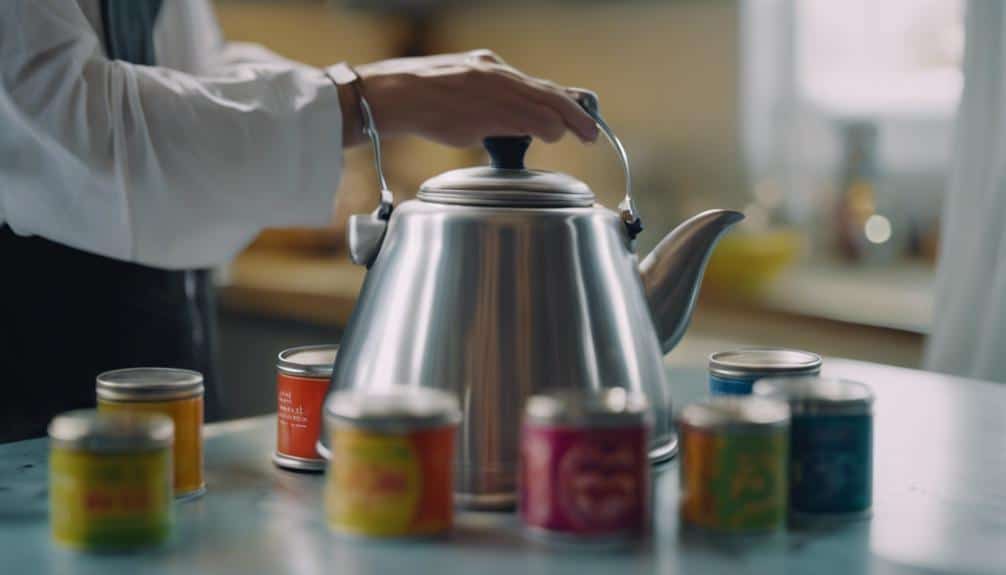
Maintaining the cleanliness and proper storage of your kettle is essential to guarantee its longevity and the quality of your brewed tea. To make sure you achieve peak performance, it's vital to regularly clean your kettle and prevent mineral buildup. A simple mixture of vinegar and water can effectively descale the kettle, removing any mineral deposits that may affect the taste of your tea. Following this cleaning routine will help uphold the kettle's efficiency.
When it comes to storing your kettle, make sure it's placed in a dry location to prevent rust or corrosion. Additionally, avoid leaving water sitting in the kettle for extended periods to prevent any bacterial growth. Always refer to the manufacturer's instructions for specific guidelines on cleaning and maintenance to keep your kettle in top condition.
Conclusion
After following these 7 essential steps, you can enjoy the perfect cup of tea brewed using a kettle.
By selecting high-quality tea leaves, heating water to the ideal temperature, and properly steeping and straining the tea, you can savor a delightful and flavorful beverage.
Remember to maintain and store your kettle properly to guarantee its longevity and preserve the quality of your brewed tea.
Cheers to a perfectly brewed cup of tea!
